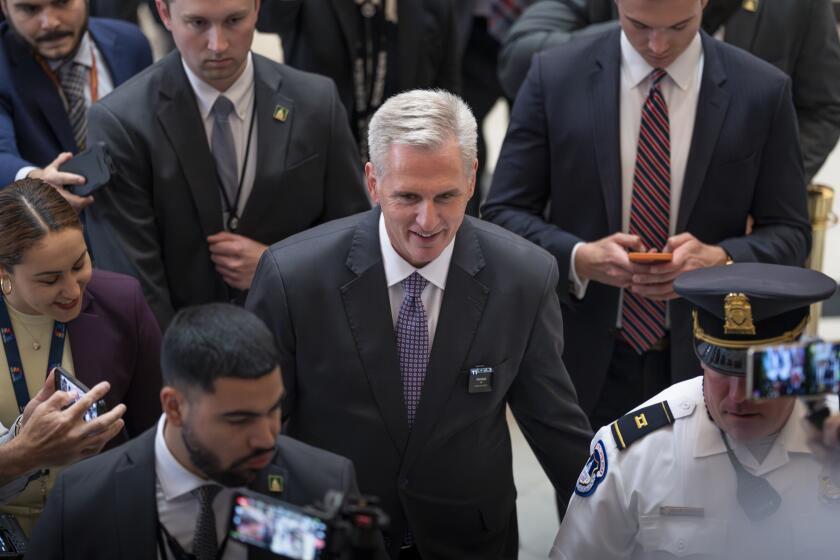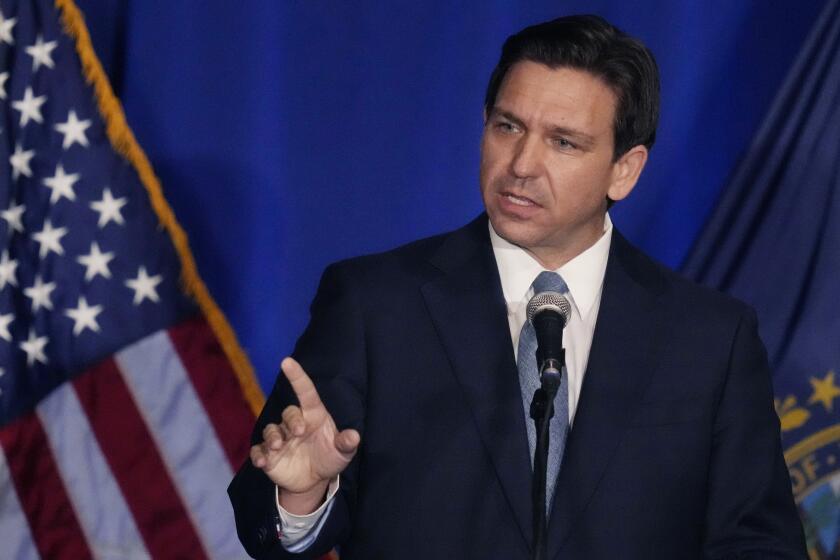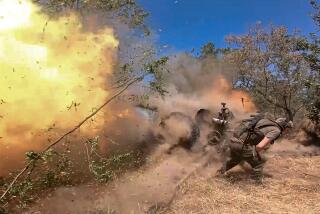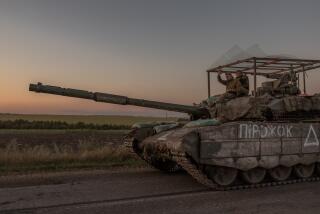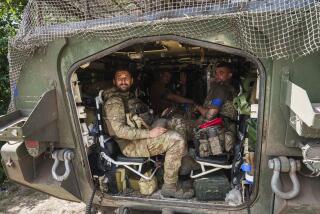Column: Ukraine’s spring offensive still hasn’t started. This war is likely to last a long time
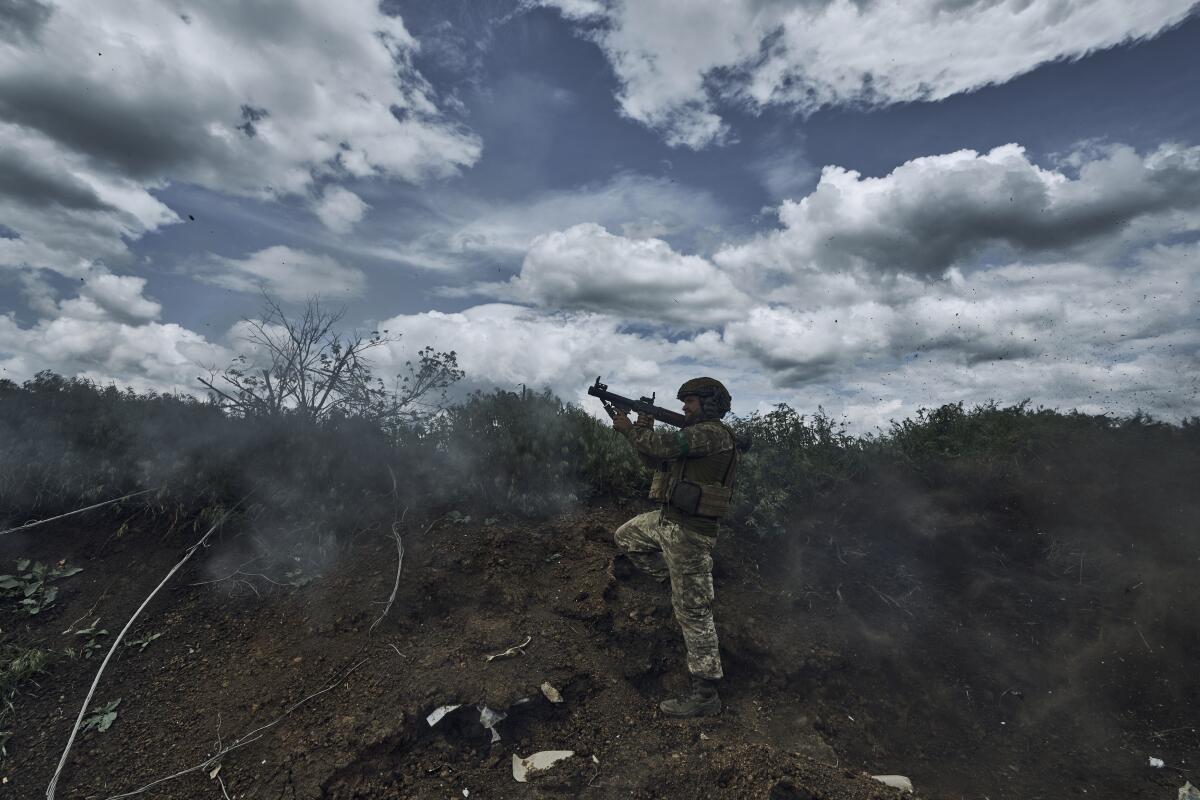
WASHINGTON — Ukraine’s long-awaited spring offensive against Russia’s invasion has been postponed so long that it has acquired a new name. It’s going to be a “summer offensive” at this point because it still hasn’t started.
Ukrainian officials maintain that the delay isn’t a setback. After spring rains turned battle zones into a sea of mud, they decided they’d rather wait for more arms to arrive from the West.
But the slippage reflects a larger truth: Ukraine’s struggle to expel Russian occupiers is likely to take years, not months.
In February 2022, Vladimir Putin hoped to conquer Kyiv in weeks. Ukraine’s unexpected resistance, boosted by a hastily improvised flood of Western aid, upended that plan and led to a year of battles.
Ukraine and its allies have been preparing a major counteroffensive for the last six months. But even the Ukrainians’ most enthusiastic boosters don’t expect the campaign to end the war quickly.
Russian forces have been building formidable defenses, including extensive trenches and minefields. In land warfare, offense is usually more difficult than defense, especially against dug-in opponents.
The summer offensive could well extend through the end of 2023 and lead to a long and grinding war of attrition.
So Biden administration officials are retooling military aid programs for a longer time frame.
“The United States, together with our allies and partners, is firmly committed to supporting Ukraine’s defense today, tomorrow, for as long as it takes,” Secretary of State Antony J. Blinken said Friday. The goal, he added, is bolstering Ukraine “for years to come.”
Officials say the goal is to counter Putin’s openly declared strategy of fighting until the United States and other Western countries tire of the conflict and pull the plug on Ukraine’s military aid.
A lot of people bet that the Republican from Bakersfield would be unable to keep his factionalized majority in line. He proved the doubters wrong. But the party remains deeply divided on an issue that once united it — the size of government.
Western weapons packages once focused almost solely on artillery and antiaircraft systems Ukraine needed to halt the Russian advance. Now they include more advanced systems that could help Ukraine defend itself long after the summer offensive.
The best example is the F-16 fighter jet, which U.S. officials long argued Ukraine didn’t need. President Biden agreed last month to allow European countries to transfer F-16s to Kyiv and train Ukrainian pilots in the United States, but the planes won’t arrive before the end of the year. U.S. officials say that’s by design; the fighters are being provided for future defense, not the summer offensive.
Other weapons packages aimed at the long run include 30 Leopard tanks promised by Germany but arriving, again, after summer is over.
At a NATO summit next month, U.S. and European officials are expected to offer Ukraine a formal “deterrence and defense partnership” including long-term commitments for military aid. The idea is modeled partly on the U.S. partnership with Israel, which comes with 10-year arms pledges.
It’s also a stopgap to sidestep Ukraine’s pleas for full membership in the North Atlantic Treaty Organization, a status that would obligate the U.S. and other alliance members to directly join the war. Biden has ruled that out.
Potential Republican presidential candidates have popped up in Iowa and New Hampshire, hoping conservative donors and voters want more alternatives to Trump.
Either way, the new focus on long-term assurances is yet another sign that the war is likely to last a long time.
Ukraine’s official objective is to expel Russian forces from all the territories they have seized since 2014, including the Crimean peninsula. The U.S. plans to focus on more practical goals: enabling Ukraine to defend itself and convincing Russia that the war is a losing proposition.
Blinken and other U.S. officials have said the outcome of the war will ultimately be determined by negotiations between Ukraine and Russia — but only after a summer offensive they hope will strengthen Ukraine.
In any case, neither side appears ready to negotiate soon.
“Putin’s probably going to decide to fight on,” said Alexander Vershbow, a former U.S. ambassador to Russia. “And the vast majority of Ukrainians are opposed to giving up any territory.”
The summer offensive will have political effects in the West as well. If Ukraine succeeds, that will buttress Western confidence that the war is worth fighting. If the offensive falls short, that will reawaken doubts in the West and encourage Putin to keep fighting.
The public’s backing for the war has eroded in the West over the last year, but polls show small majorities or pluralities still favor continued military aid. Administration officials have tried to strengthen U.S. support by arguing that the war is about more than Ukraine.
“How often in history have aggressors who seize all or part of a neighboring country been satisfied and stopped there?” Blinken asked, drawing implicit parallels with World War II and the Cold War. “When has that ever satisfied Putin?”
Ukrainians have borne tragic costs in blood and treasure to defend their country. With bravery and luck, their coming summer offensive could be a turning point, even though it’s unlikely to end the war.
The challenge for the long run is whether the United States and Europe can be relied on to back them, as Blinken said, for “years to come.”
More to Read
Get the L.A. Times Politics newsletter
Deeply reported insights into legislation, politics and policy from Sacramento, Washington and beyond. In your inbox three times per week.
You may occasionally receive promotional content from the Los Angeles Times.
